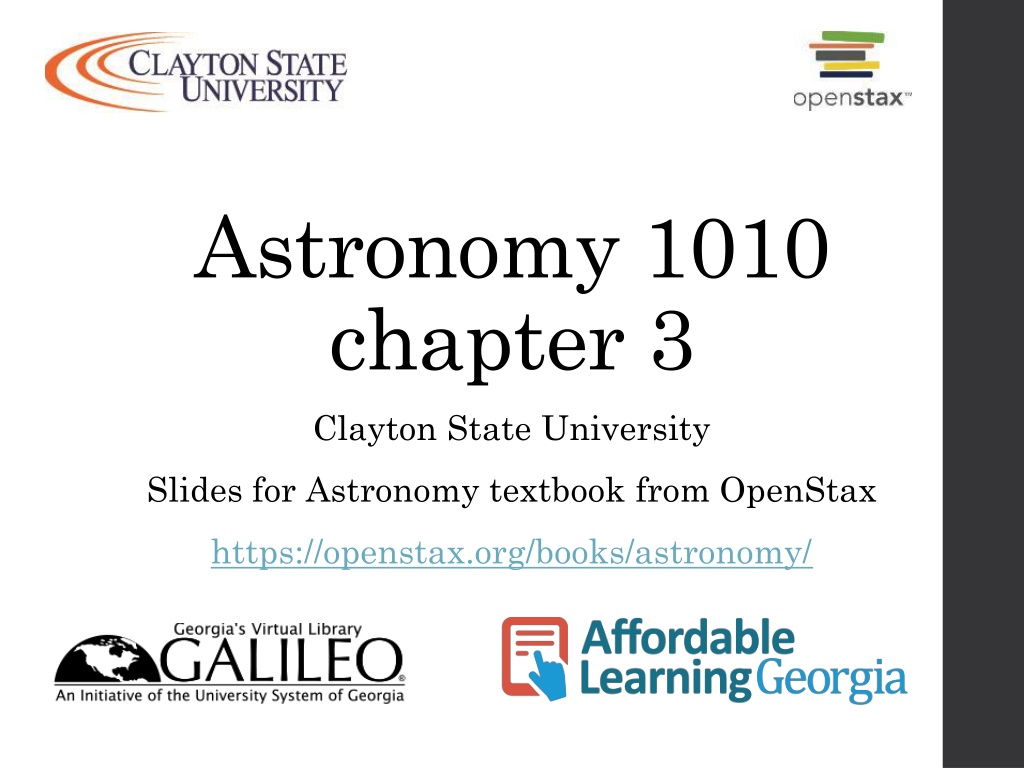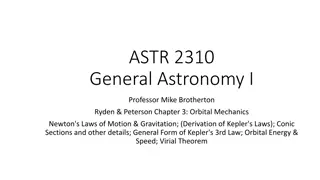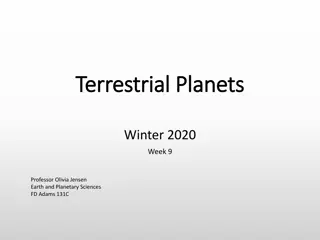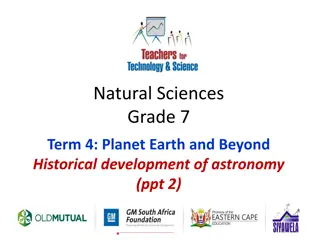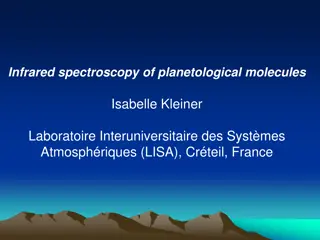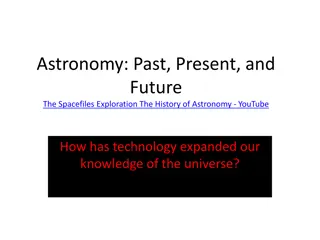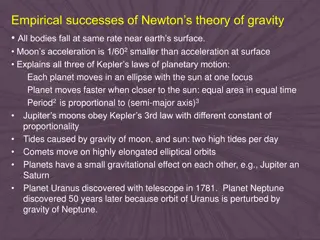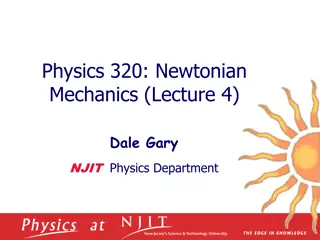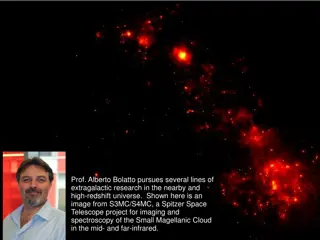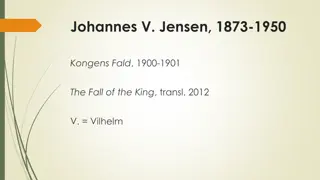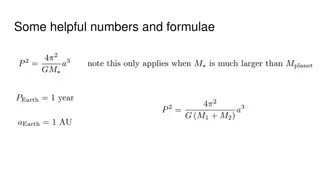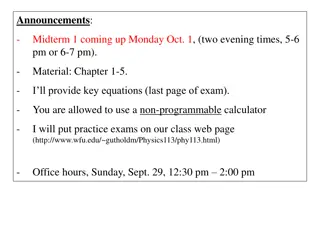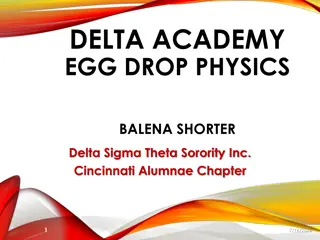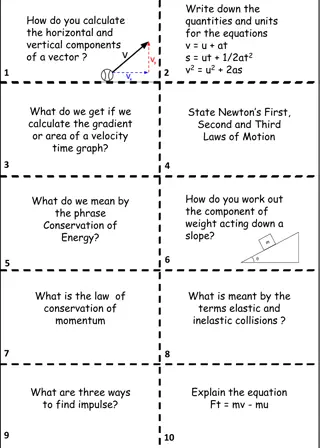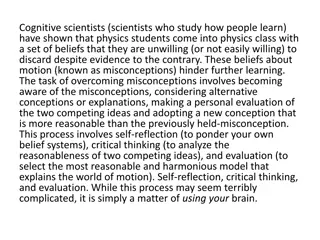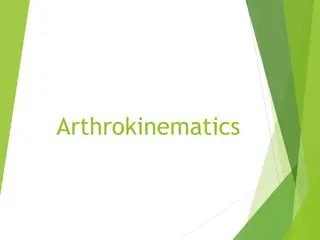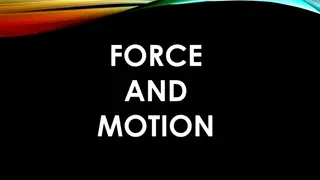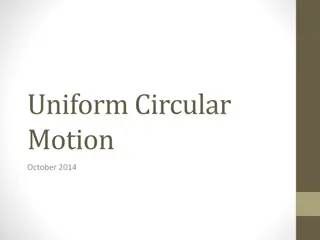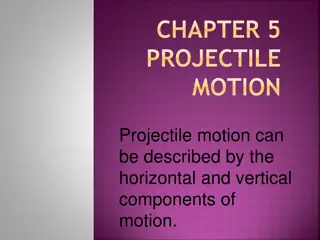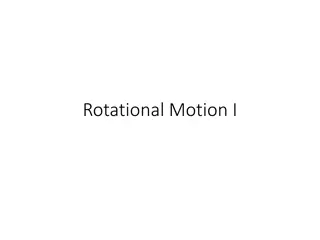Johannes Kepler and His Revolutionary Laws of Planetary Motion
Johannes Kepler, a pivotal figure in the history of astronomy, made groundbreaking discoveries by overturning the geocentric model of the universe. By formulating his three laws of planetary motion, Kepler paved the way for scientific advancements and paved the path for Isaac Newton's law of gravity. Kepler's work revolutionized our understanding of the cosmos and laid the foundation for modern astronomy.
Download Presentation

Please find below an Image/Link to download the presentation.
The content on the website is provided AS IS for your information and personal use only. It may not be sold, licensed, or shared on other websites without obtaining consent from the author. Download presentation by click this link. If you encounter any issues during the download, it is possible that the publisher has removed the file from their server.
E N D
Presentation Transcript
Astronomy 1010 chapter 3 Clayton State University Slides for Astronomy textbook from OpenStax https://openstax.org/books/astronomy/
Johannes Kepler Received an-invitation from Tycho Brahe In December of 1599 to come to Denmark and work with him. Kepler seized the opportunity and, after Brahe's death, used Brahe's very precise observation data concerning Mars, to discover why Copernicus' model had problems motion any more accurately than Ptolemy's. He also did observations of his own of the motions of Mars, Venus and Mercury. His conclusions were as simple as they were elegant: the planets did not move in circular orbits! They moved in elliptical ones. Kepler had done what neither Ptolemy, Copernicus nor Tycho Brahe had been able to do-- free models of the Universe from the tyranny of the circle. This First Law of Planetary Motion, arrived at in 1604, enabled the Copernican system to accurately predict the movement of the planets and, more importantly, removed the major scientific objection to its validity. predicting planetary It is ironic that in completing his work in astronomy, Kepler destroyed the framework of his other pursuit, astrology. Throughout his life he was to show no hesitation in his support of the Copernican system. Kepler also encouraged other mathematicians and astronomers to come out in support of the sun centered Universe as well. Among these was an obscure Italian named Galileo Galilei. 2
Keplers laws 1 Kepler s First Law states that planets move around the Sun in an elliptical orbit with the Sun at one focus of the ellipse. (property of the ellipse sum of two red lines is always constant) 2 Kepler s 2nd Law: The line from the Sun to a planet sweeps out equal areas (in grey) in equal times. 3
Keplers laws 3 What Kepler discovered, to be exact, is that the square of the orbital period (T) of a planet is directly proportional to the cube of the semi-major axis of its orbit (a) T2 ~ a3 planets move slower when they re farther from the Sun, and whatever influence makes planets go around the Sun weakens with distance. It was left to the great British scientist and world-historical genius, Isaac Newton, to explain this relationship with his own law of gravity Kepler s three laws appear to hold not just in our own solar system, but in all circumstances where one body moves under the influence of another s gravity. They are general universal relationships. 4
Keplers 3rd law in practice For any two planets, ? ? ?=?? ?? ?? ? ?? Question: If Jupiter s distance to Sun is 5 AU, how long is its year? Hint: do comparison with Earth (distance is 1 AU, period is 1 year). 5
Isaac Newton Sir Isaac Newton (25 December 1642 20 March 1726/27) was an English mathematician, physicist, astronomer, theologian, and author (described in his own day as a "natural philosopher") who is widely recognized as one of the most influential scientists of all time, and a key figure in the scientific revolution. His book Philosophi Naturalis Principia Mathematica ("Mathematical Principles of Natural Philosophy"), first published in 1687, laid the foundations of classical mechanics. Newton also made seminal contributions to optics, and shares credit with Gottfried Wilhelm Leibniz for developing the infinitesimal calculus. For more interesting facts, check out: http://mentalfloss.com/article/24520/6-things-you- should-know-about-isaac-newton 6
Newtons Laws Net zero force can all be balanced. Inertial reference frame stationary or moving without acceleration no external forces. 7
Newtons Laws Where mass is just a proportionality constant. Its inertial mass, NOT weight! 8
Newtons Laws 3rd law: Every action causes equal and opposite reaction Consequence: not only star attracts the planets, but the planets affect the motion of the Sun as well. Thus, Sun and planets orbit the common center of mass of the Solar system (Barycenter) 9 Adopter from: https://spaceplace.nasa.gov/barycenter/en/
Newtons Laws Universal law of gravity 10
What about g? Weight is: w = ?? But also ??=?? gravitational constant, M is the mass of Earth and R is the radius of Earth ?2?, where G is the Thus, acceleration of free fall is ? =?? ?2 This value can be calculated for any body in the universe that had mass and radius (Can you think of any objects that don t have either of the above characteristics?) 11
Orbital Speed Force of Gravity on a satellite m from planet M with radius R: ? =??? ?2 Centripetal force on a satellite on a circular orbit: ??= ??2 ? Equate F=Fc, and get the orbital velocity: ??? ?2 = ??2 ? ?? ? ? = 12
